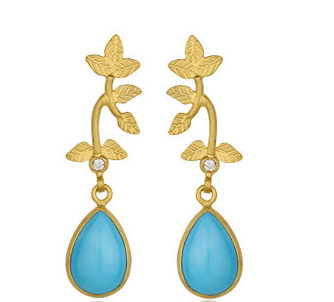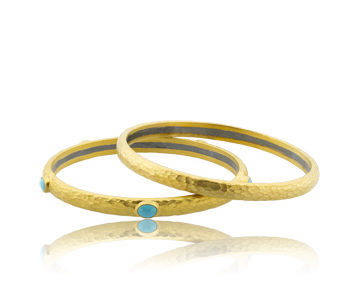Lika Behar: The Transition of Turquoise
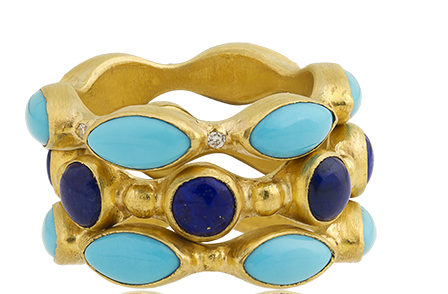
“It gives me such joy to see that women have begun to start thinking of turquoise as a seasonless stone. It’s akin to the way they realized white could still be worn after Labor Day. There would be no newness in fashion if rules weren’t broken — and the same holds true for jewelry.”
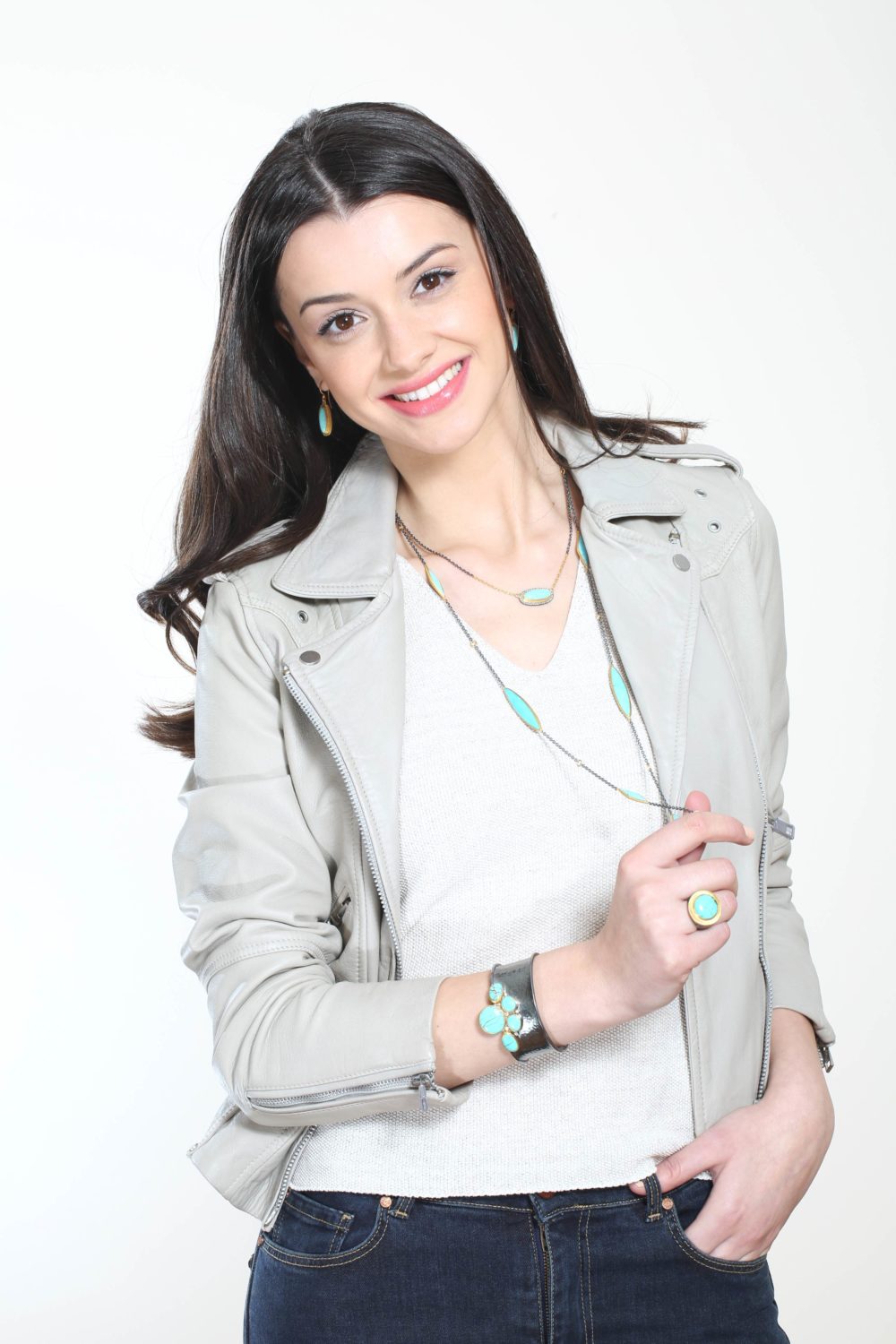
Lika Behar’s model wearing sleeping beauty turquoise in an array of styles with a light jacket for fall
Lika Behar’s approach to defying conventional attitudes with her fine jewelry collection was instrumental in redefining turquoise’s image when she first launched her collection in 2008. Lika, along with a handful of other freethinking designers reflected on turquoise’s history and reworked ancient and antique references into pieces that have a contemporary character.
With meanings that range from luck and good fortune to friendship and courage, turquoise is one of the earliest protective amulets from various cultures. It is also a gem considered to have healing and spiritual properties. “And, during ancient times, there were no concerns about wearing turquoise during the fall and winter,” Lika says, laughing. “In the beginning, women began to accept turquoise only for spring and summer,” But that has changed now. We can show and sell it set into the warmth of buttery gold, year round.”
It was not easy going at first. “The baby boomer generation associated turquoise with silver and native American jewelry, conjuring up images of going to the ‘head shop’ in the seventies,” Lika explains. “It took a while for this demographic to accept how rich and alluring it can be combined with yellow gold.”
She continues, “ The millennial generation seems to live in the moment –their references are more what’s going on right now, today, and they are attracted to this ‘happy’ color against the glow of gold.”
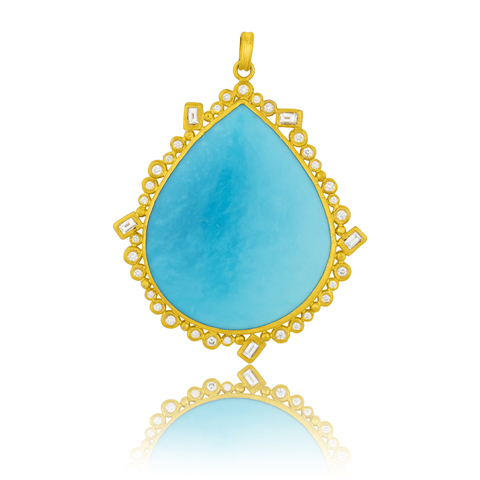
Lika Behar’s pear shaped turquoise, high karat gold and diamond pendant
Jewelry collectors of various time periods know that turquoise is associated with a long history of being set into yellow gold, during ancient civilizations and then again in the Victorian era—when turquoise was plentiful, coming from diverse sources. “The 19th century was also the time of the industrial revolution, which made it possible for women of middle classes to wear beautiful gemstone jewelry, much of which was in turquoise and one of my other favorite stones, opal,” Lika adds.
Turquoise came back during the mid-20th century mid twentieth century with houses such as David Webb and Van Cleef & Arpels, often in suites and set with cabochon, calibre and bombe settings. After the Native American craze, it went out of favor until designers like Lika brought it back for the new millennium.
- drop pear shape turquoise earrings
- hammered high karat gold turquoise bangles
Lika’s Sleeping Beauty turquoise, which is of fine quality, is cut into cabochons for which she builds feminine settings for large pear-shaped pendants and swirly leaf line earrings with diamond accents. She can also lean more toward bold shapes in a mix of black rhodium silver and high-karat gold for cuffs and organically shaped earrings and pendants. She works turquoise into hand-hammered bangles meant to be stacked high and in a variety of widths, and into stackable rings that work with other colors in her collection “that also once had a completely different rep—like lapis, which is often seen in more bohemian ethnic jewelry.”
Lika notes that one of her favorite aspects of turquoise is also the way it complements every complexion, hair and eye color. “I don’t know if there is another stone that looks as good and striking on all women,” she says.
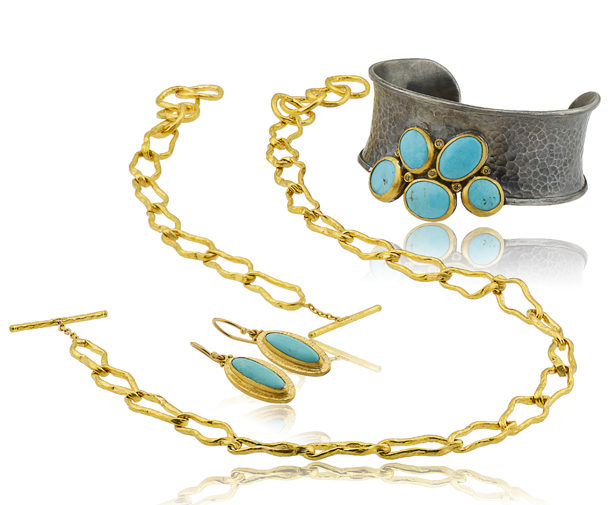
gold and silver cuff with turquoise cabochons , High Karat gold and turquoise earrings, necklace and bracelet.
“I love all cuts and shapes and also have fun working with slices and irregular shapes. When I find these shapes, they often informs the design,” Lika says. Whatever the style, in bending the rules and pushing the boundaries of precious jewelry, Lika Behar has found turquoise to be a staple in her collection and one she will continue to evolve.
This Article is in Collaboration With Lika Behar

